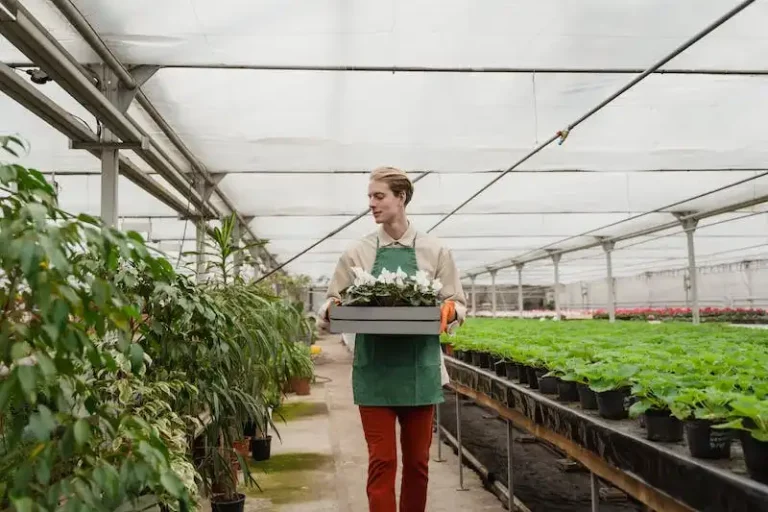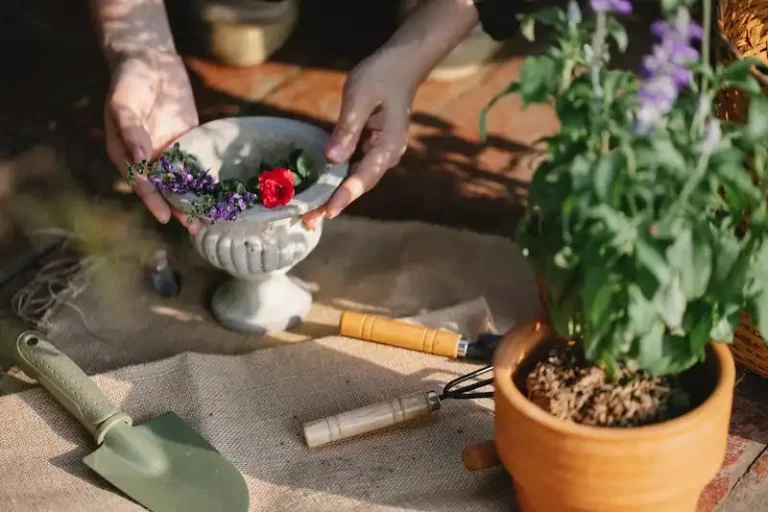Flea beetles are tiny pests that can cause significant damage to your vegetable garden. These beetles, which are about the size of a grain of rice, got their name from their ability to jump like fleas. They are often found in the soil and tend to favor plants in the crucifer family, such as broccoli, cabbage, and kale.
There are several types of flea beetles, but the most common species is the crucifer flea beetle. This beetle has a shiny black body and is typically found in cool climates, like the mountains. It is most active during the spring and early summer months when temperatures are mild.
Flea beetles can be identified by the small holes they leave on the leaves of plants. These tiny holes may appear as if the plant has been peppered with small dots. Flea beetles feed on the leaves of plants, which can cause wilting and stunted growth. They can also transmit diseases, leaving your plants vulnerable to other pests and environmental factors.
To control flea beetle infestations, there are several steps you can take. One option is to use cultural controls, such as rotating crops and properly disposing of infested plant debris. You can also try using row covers to physically exclude the beetles from your plants. If you choose to use pesticides, it’s important to use them sparingly and to follow the instructions on the label. Organic options, such as pyrethrins or neem oil, are typically safer for the environment.
Preventative measures can also be taken to limit flea beetle damage. Planting your vegetables in healthy, nutrient-rich soils can help plants withstand feeding damage. Adding potassium-rich fertilizers and providing proper watering can also promote plant health. Additionally, keeping your garden tidy by removing weeds and debris can help reduce flea beetle populations.
In conclusion, flea beetles can be a nuisance in the garden, but with the right strategies and preventative measures, you can effectively control their populations. By creating a healthy and friendly environment for your plants, you can limit the damage caused by these pests and ensure a successful growing season.
Controlling Flea Beetles In The Vegetable Garden: How To Get Rid Of Flea Beetles
Flea beetles are small, shiny black beetles that can cause significant damage to your vegetable garden. They are known for their ability to jump like fleas when disturbed, hence their name. These pests are especially attracted to specific vegetables such as radish, eggplant, potato, and tomato seedlings.
To limit flea beetle damage, it is important to consider various control methods. Here are some strategies you can use:
- Physical Barriers: Covering your seedlings and vegetables with row covers or insect netting can help prevent adult flea beetles from feeding on the plants.
- Early Planting: Starting your seeds and transplanting seedlings as early as possible can help them establish before the flea beetles appear, reducing the potential for damage.
- Companion Planting: Intercropping with plants that repel flea beetles, such as marigolds or alliums, may deter these pests from infesting your vegetable garden.
- Organic Insecticides: If the flea beetle population is large and causing severe damage, using organic insecticides can help control their population. Some options include neem oil and insecticidal soap.
- Beneficial Insects: Encouraging the presence of natural enemies of flea beetles, such as ladybugs or parasitic wasps, can help keep their population in check.
When identifying flea beetle damage, look for small holes in the leaves, giving them a “shot-hole” appearance. Seedlings are particularly vulnerable, as flea beetles can kill them if left unchecked. Mature plants can usually tolerate some damage without significant harm.
Flea beetles can overwinter in plant debris or near their preferred host plants, so it is crucial to clean up your garden thoroughly in the fall. Removing leftover plant material and tilling the soil can disrupt their life cycle and reduce their numbers the following season.
Flea beetles thrive in dry and hot environments. To create a less favorable environment for them, ensure your vegetable garden has adequate moisture and provide regular irrigation, especially during dry spells. Adding organic matter to the soil can also help retain moisture.
In addition to these general strategies, it is important to note that different types of flea beetles may prefer certain plants. For example, the crucifer flea beetle targets brassica crops like cabbage and kale, while the potato flea beetle attacks solanaceous vegetables like potatoes and tomatoes. Understanding the specific flea beetles in your area can help you narrow down control methods.
In conclusion, flea beetles can pose a threat to your vegetable garden, but with proactive measures, you can effectively manage their population and limit the damage they cause. Remember to regularly inspect your plants, implement preventative strategies, and intervene when necessary to maintain a healthy growing environment for your vegetables.
How to Get Rid of Flea Beetles
Flea beetles can be a nuisance in the garden, causing damage to your vegetable plants. If you have questions about how to get rid of flea beetles, there are several methods you can try.
One natural method for controlling flea beetles is to wait for a frost. Flea beetles are sensitive to cold temperatures, so a hard frost can kill off these pests. However, this method may not be practical in all environments, especially if you live in a warmer climate.
Another preventative measure is to create an environment that is less attractive to flea beetles. You can do this by keeping your garden clean and free from debris, as well as by removing any weeds or plants that flea beetles are attracted to. Additionally, you can use row covers or netting to create a physical barrier that prevents flea beetles from accessing your plants.
If you already have flea beetles in your garden and they are causing damage to your plants, there are products available that can help. Insecticidal soaps and horticultural oils can be effective at controlling flea beetles. These products suffocate the beetles and can be sprayed directly on the plants. However, be sure to read and follow the instructions on the product label before using.
There are also natural predators of flea beetles that you can introduce to your garden. Ladybugs, lacewings, and ground beetles are examples of beneficial insects that feed on flea beetles. By attracting these helpful insects to your garden, you can reduce the flea beetle population.
Controlling flea beetles on your solanaceous plants, like tomatoes and eggplants, can be more challenging. These plants are particularly susceptible to flea beetle damage. One option to consider is a diatomaceous earth powder that contains three percent spinosad. This natural product can be effective against flea beetles.
In conclusion, there are several methods you can use to get rid of flea beetles in your garden. From preventative measures like keeping your garden clean and using physical barriers, to controlling them with sprays or attracting natural predators, there are options for every gardener. By identifying and preventing flea beetle damage early on, you can protect your plants and ensure a healthy environment.
Controlling Flea Beetles
If you have a garden, you may be familiar with the nuisance of flea beetles. These small, shiny bugs can quickly damage your plants, leaving tiny holes in leaves and causing wilting. Fortunately, there are several ways to control flea beetles and protect your garden.
One of the most effective methods of flea beetle control is physical removal. If you spot flea beetles on your plants, simply brush them off or pick them off by hand. This can be a daily task, especially during the peak feeding times of early morning and late afternoon.
Another preventative measure is to limit the flea beetles’ environment. Flea beetles tend to hide in the soil during the winter months, so clearing away debris and tilling the soil in the fall can help reduce their numbers. Additionally, keeping your garden clean and free from weeds can limit the places where flea beetles can hide.
There are also specific products available for controlling flea beetles. Insecticidal sprays and dusts can be applied directly to the plants to kill the beetles. However, be sure to read the instructions carefully and only use these products when necessary, as they can also harm beneficial insects.
Some natural methods of flea beetle control include using sticky traps or applying diatomaceous earth. Sticky traps can be hung near the affected plants to catch the beetles as they jump. Diatomaceous earth is a fine powder made from the fossilized remains of algae. When flea beetles come into contact with it, it dehydrates and kills them.
Plant choice can also play a role in flea beetle control. Some plants, such as radish and eggplants, are more attractive to flea beetles than others. By planting these crops away from your main garden or using them as trap plants, you can help protect your more desired plants from flea beetle damage.
Finally, creating an environment that is friendly to natural predators of flea beetles can help keep their populations in check. Ladybugs, lacewings, and nematodes are all natural enemies of flea beetles. By planting flowers and herbs that attract these beneficial insects and avoiding the use of broad-spectrum insecticides, you can encourage a balanced ecosystem in your garden.
In conclusion, controlling flea beetles requires a combination of preventative measures, physical removal, and targeted treatments. By being proactive and implementing these tips, you can protect your plants from the damage caused by flea beetles and enjoy a healthy garden.

